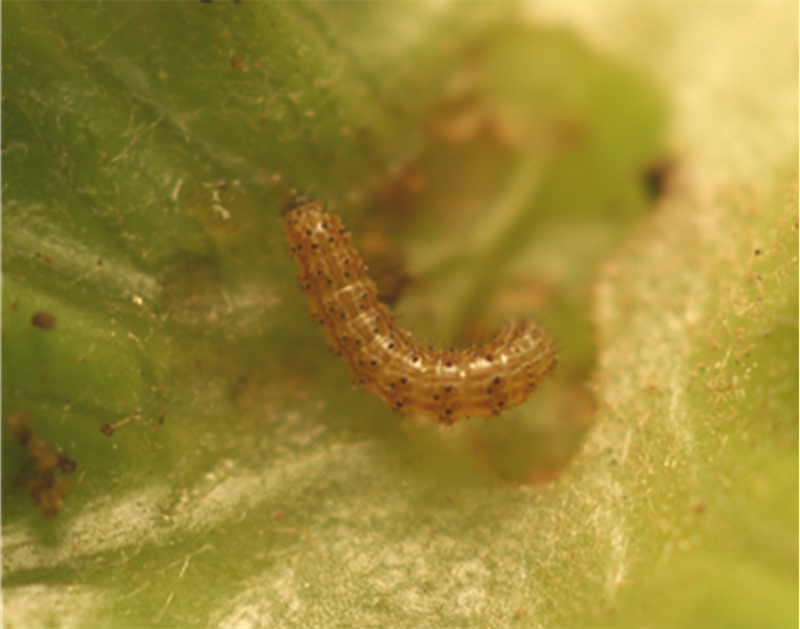-
Feb 24, 2021Spring Pest Activity in Desert Produce
Aphids: Aphid populations have remained relatively light so far this season. We are currently finding green peach aphid, lettuce aphid, and foxglove aphid on lettuce/brassicas at YAC. Green peach aphid populations have been declining on lettuce (~1/plant) but increasing rapidly on the brassica crops (>80/plant). Lettuce aphids and Foxglove aphids are beginning to colonize regularly and are likely to increase with warmer weather ahead. Also receiving reports of pockets of Lettuce aphids (and a few foxglove) showing up in Yuma Valley, Gila Valley and Tacna/Roll areas in both organic and conventional lettuce. Because aphid species are inherently different in their susceptibility to insecticides, the proper choice of product is important for achieving adequate control. For more information on control visit Foxglove aphids on Desert Produce and 2021 Aphid Control.
Thrips: Western flower thrips are finally beginning to build throughout the area. Abundance will likely continue to increase on late lettuce where “bioconcentration" of thrips occurs each year as produce acreage declines. As the number of lettuce acres becomes reduced near the end of the season, this creates a bottleneck effect that concentrates high numbers of thrips adults on the remaining fields under production This can often make chemical control of thrips populations very difficult, particularly in March, as thrips adults may continually re-infest fields following spray applications. Also, keep an eye out for INSV or unusual necrotic growth on plants. See the Thrips Control 2021 for more information.
Corn Earworm: We only have a couple of reports of corn earworm larvae showing up in head lettuce from local PCAs. Similarly we have found few at YAC. However, we are starting to pick up moths in pheromone traps throughout the area, and particularly in Tacna, Wellton, and Dome areas. This is significant since we haven’t had any prior moth activity since mid-November. March is historically the time when spring lettuce tends to be infested heaviest by earworms, and PCAs should consider intensifying their scouting efforts on the last remaining head lettuce fields. For more information see Corn Earworm Management on Desert Produce.
Cabbage looper/Beet armyworm: Activity has been unusually low for the past several months and pheromone trap counts have been the lowest we’ve seen in 8 years. We’re picking up sporadic larvae in cabbage and lettuce at YAC, but only an occasional report of activity from PCAs. Nonetheless, keep an eye out for them on late lettuce.
Diamondback Moth (DBM): DBM moth counts in most traps are similar to this time last season (see DBM Trap Network). There are still reports of DBM in commercial field, and the numbers in untreated cabbage and broccoli at YAC are beginning to build (~1 / plant). Although bioassays of DBM populations collected from cauliflower in November from the Yuma Ag Center showed no signs of DBM resistance to Coragen, bioassays of populations collected from Salinas and Santa Maria last fall showed high levels of resistance. You may want to avoid using chlorantraniliprole containing products (Coragen/Besiege) on crops where transplants originated from coastal CA. For more information see 2021 Guidelines for Diamondback Moth Management.

Name the 2 insect pests that caused the damage to this fall broccoli below
 To contact John Palumbo go to: jpalumbo@ag.Arizona.edu
To contact John Palumbo go to: jpalumbo@ag.Arizona.edu

















